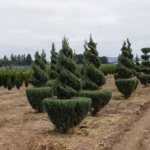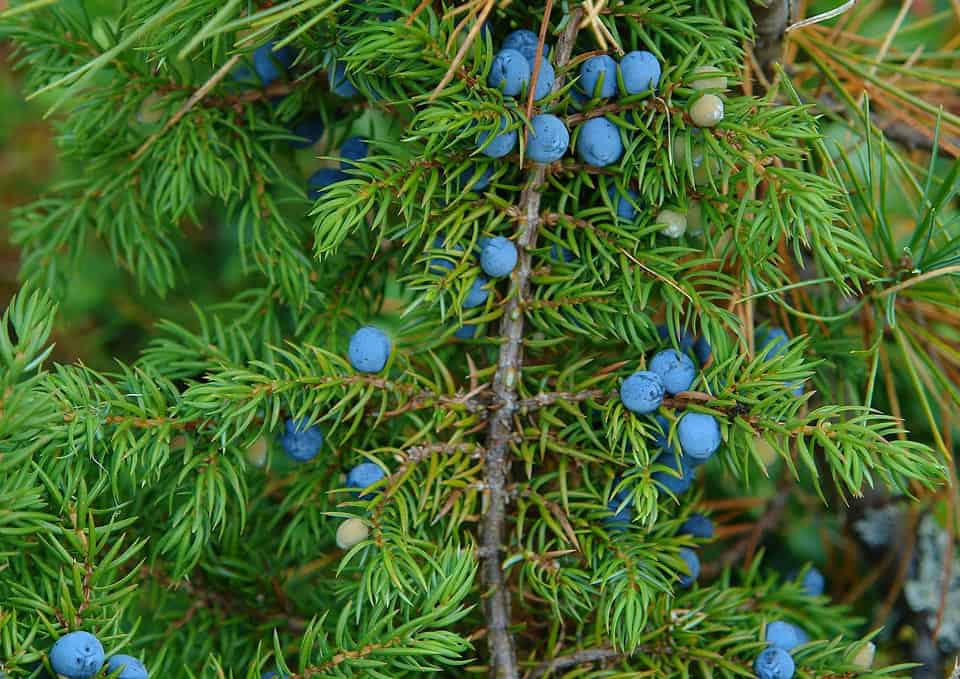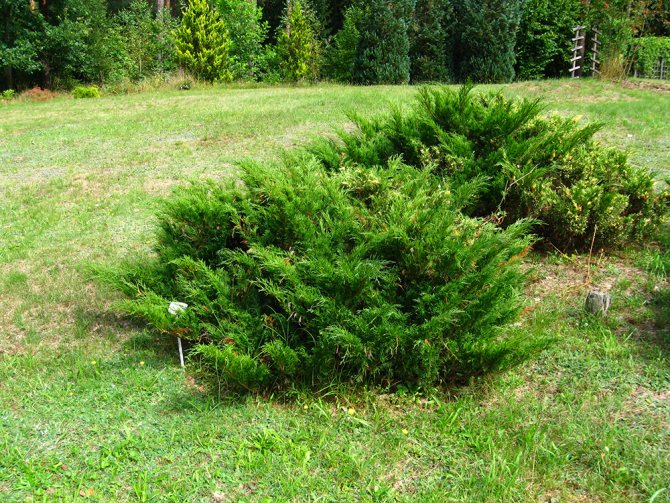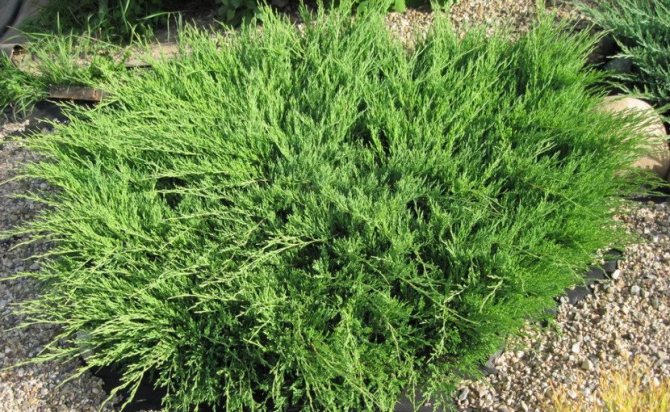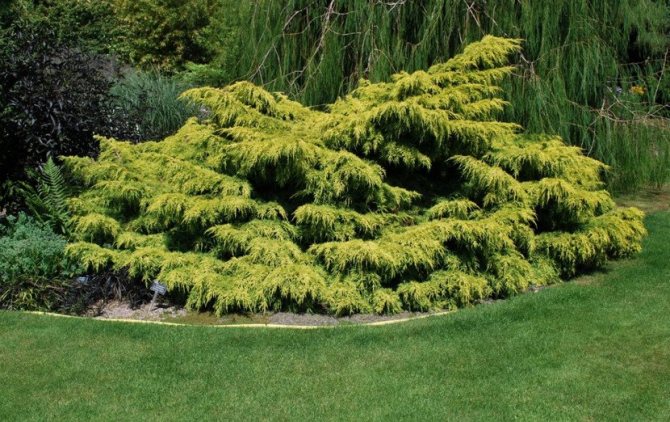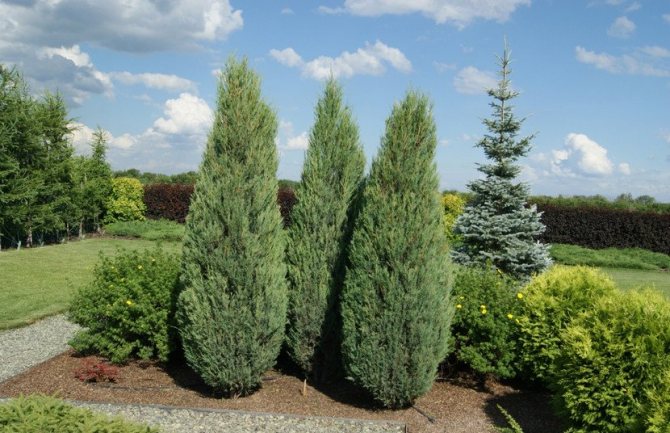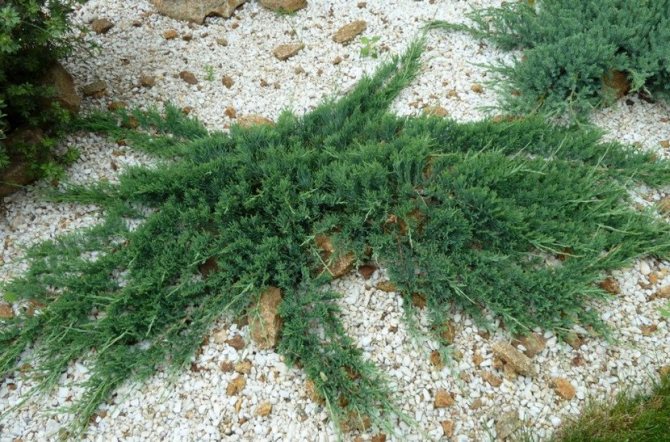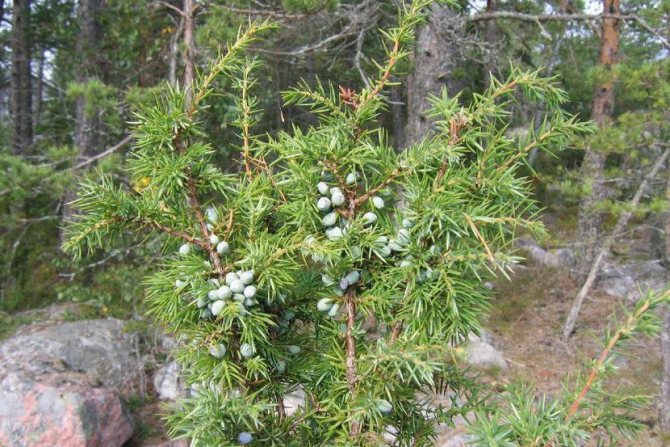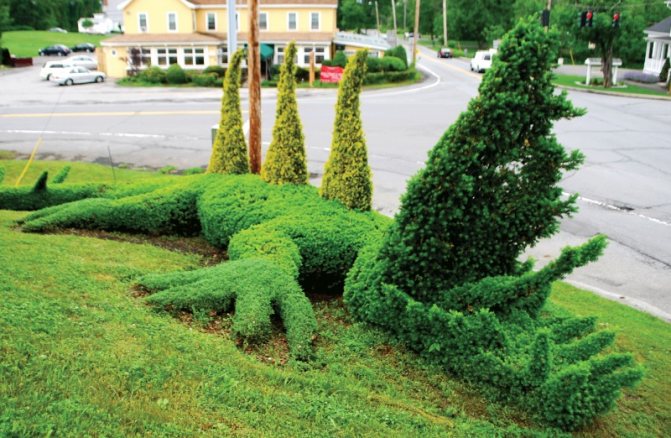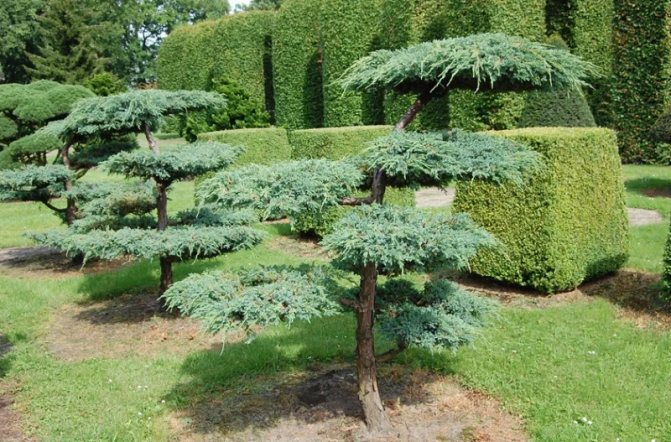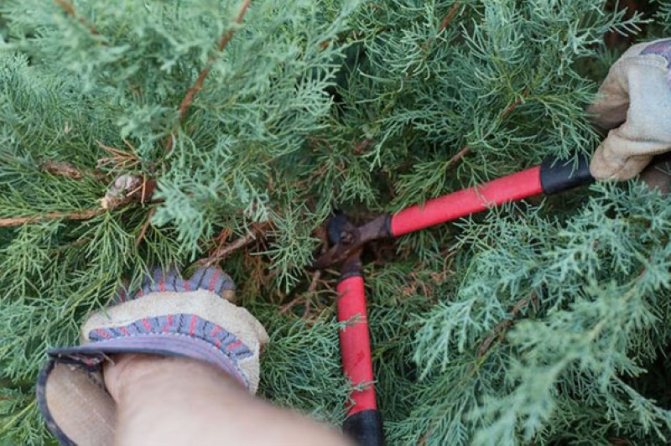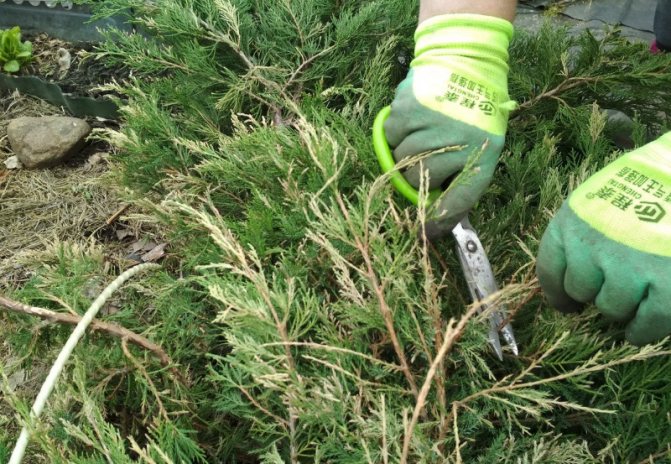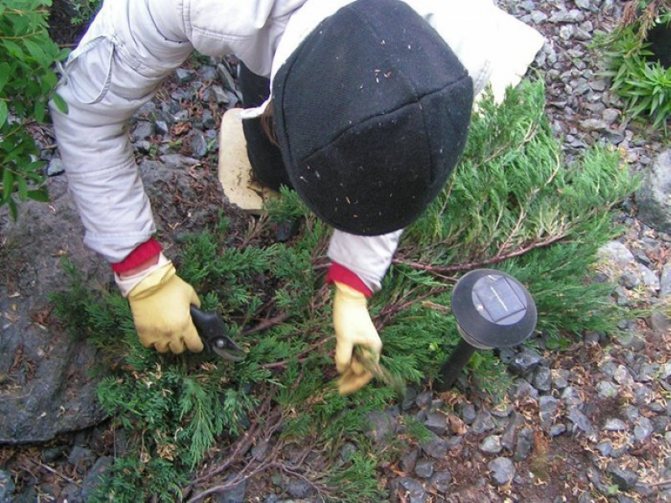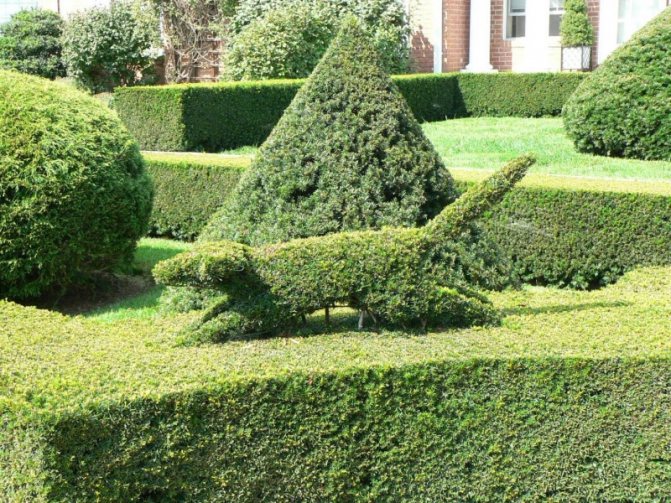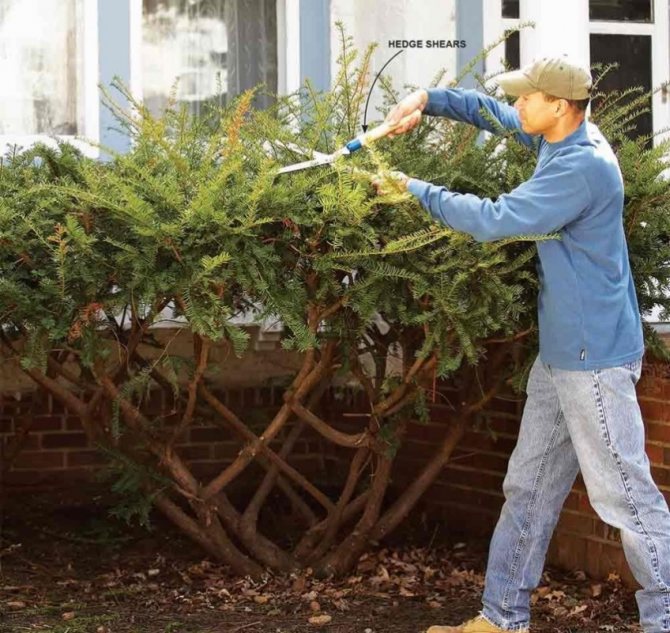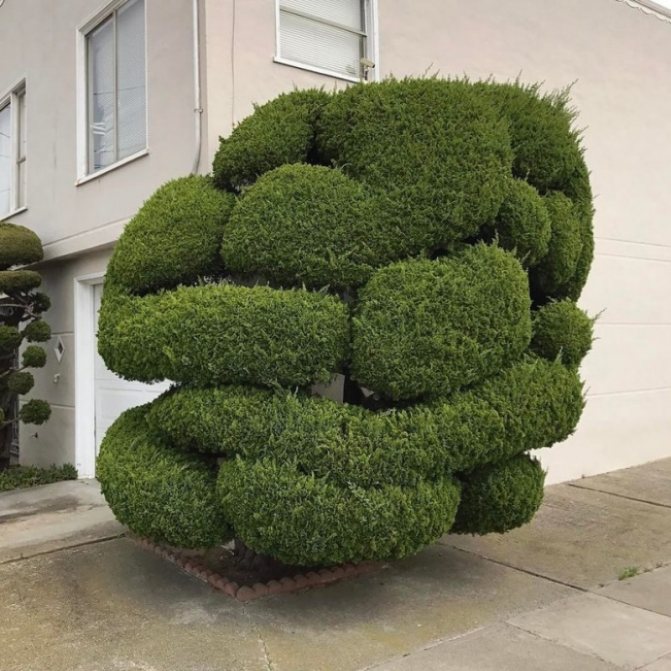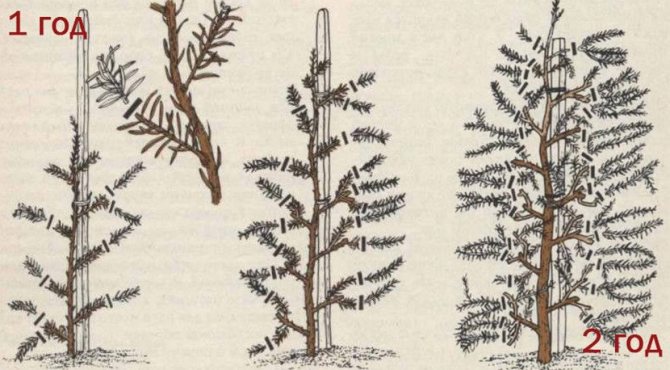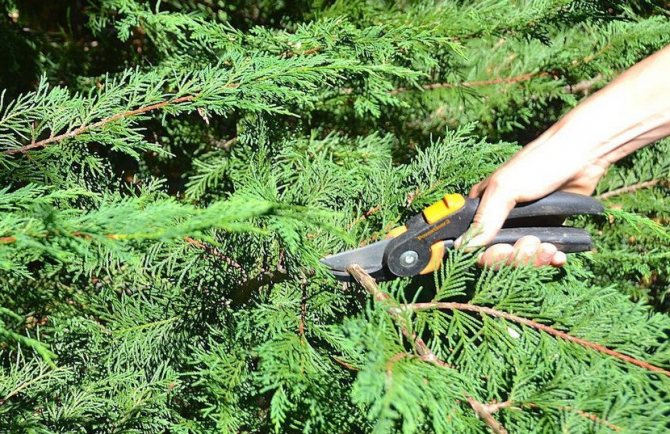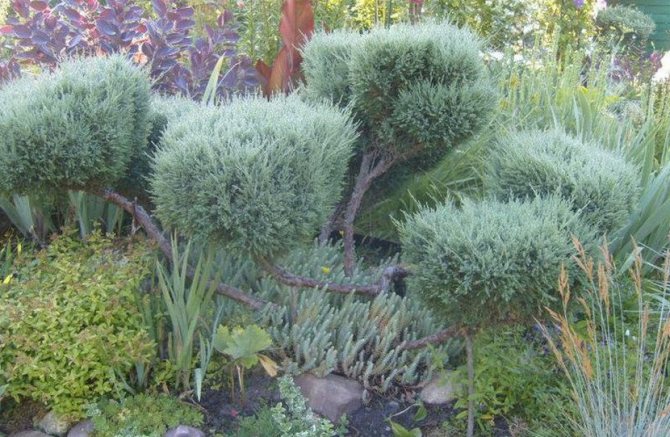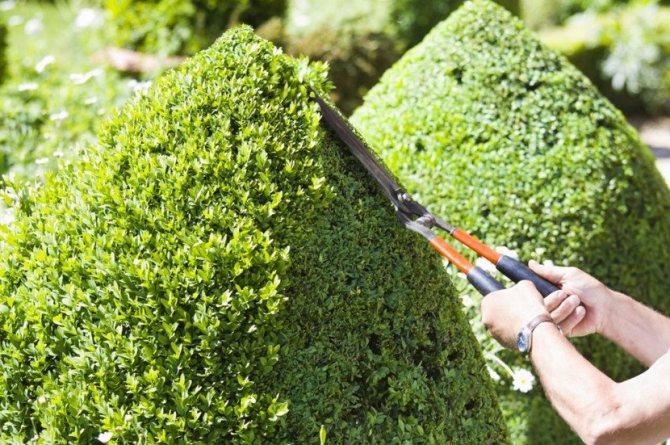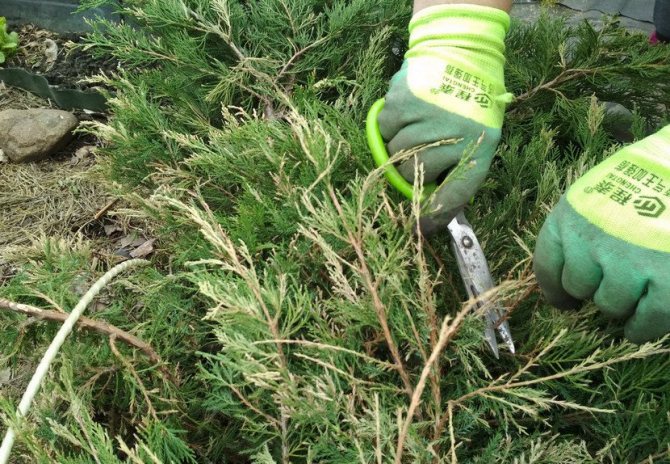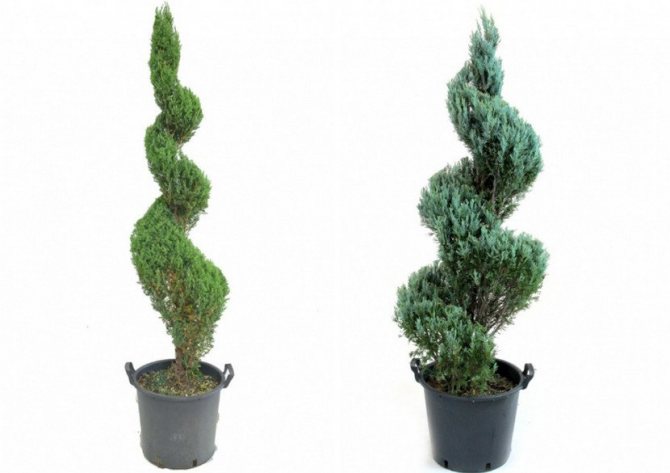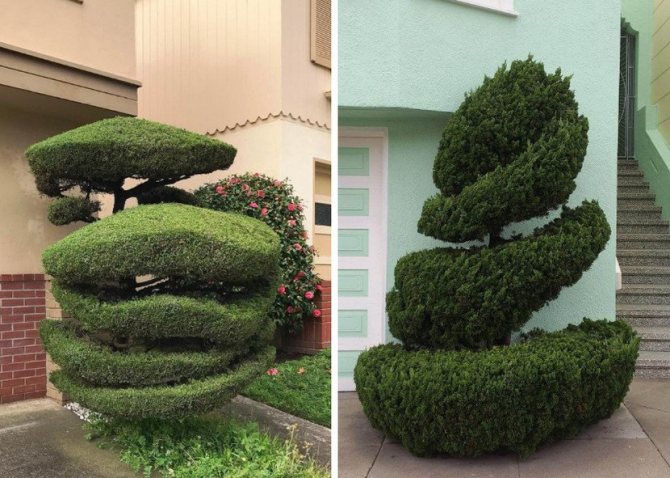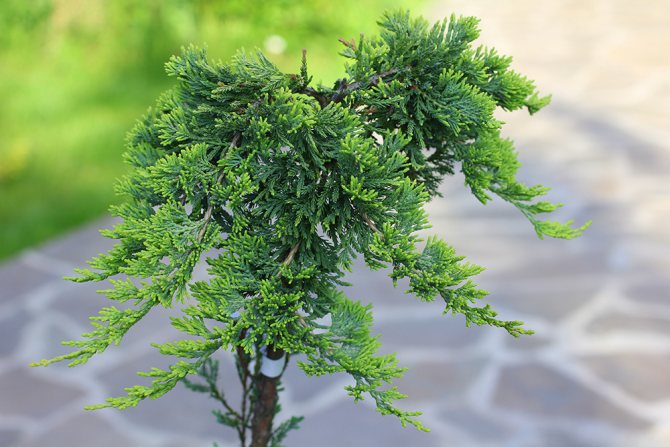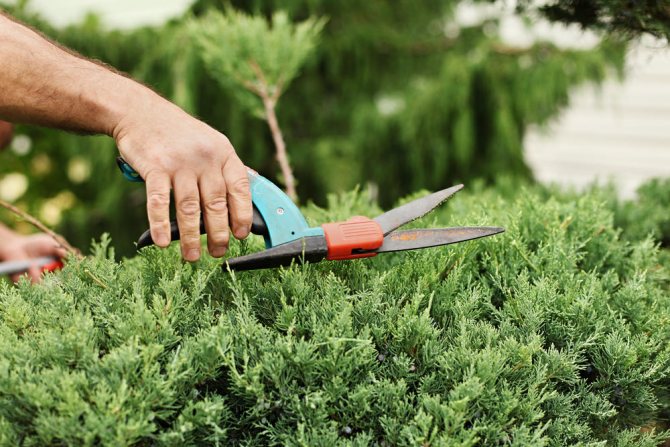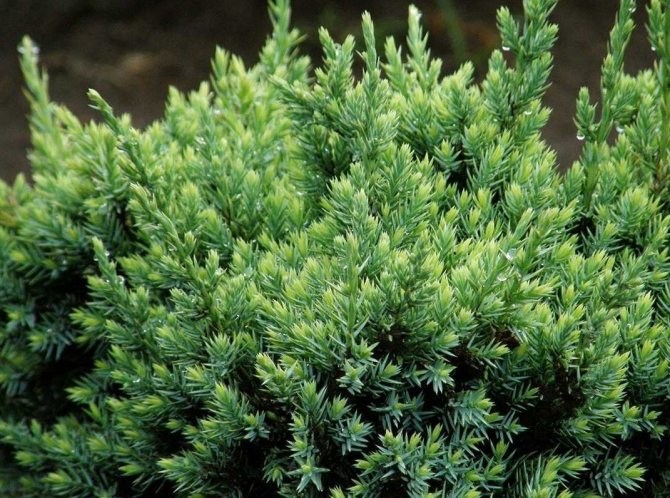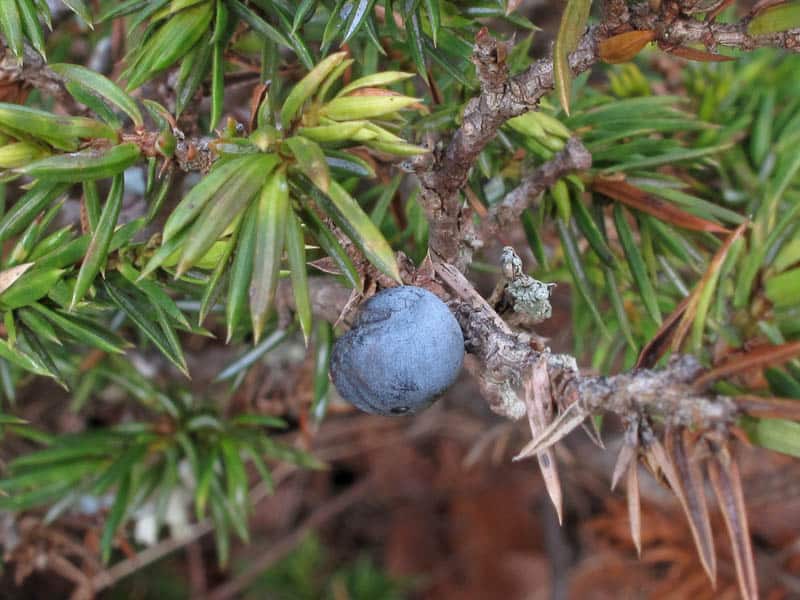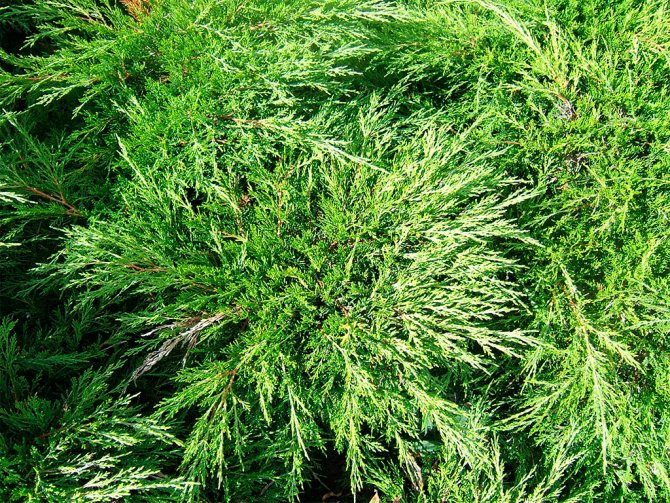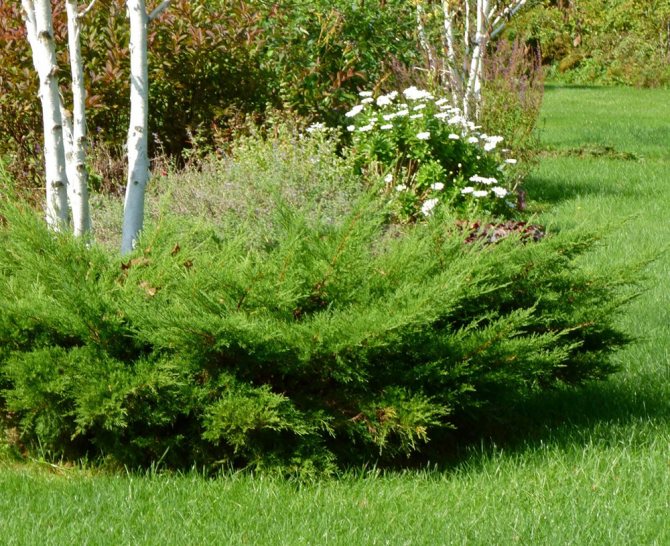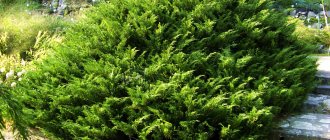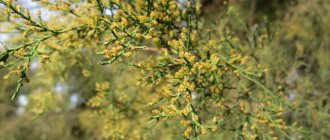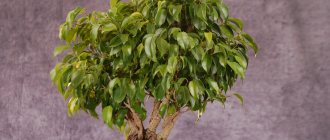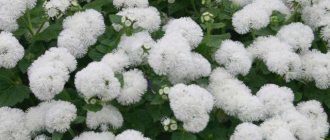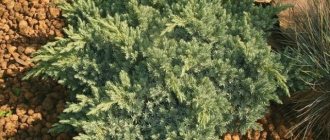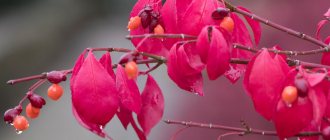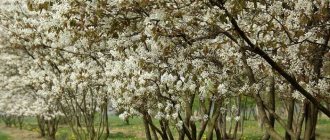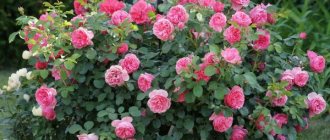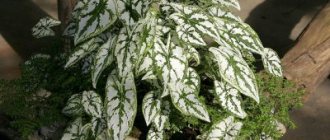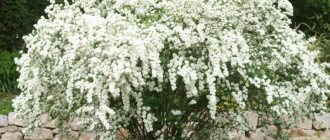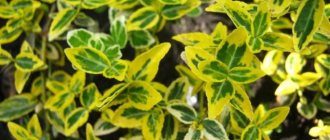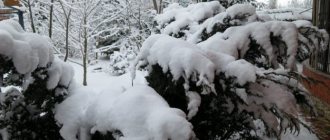Juniper belongs to ornamental crops, which will always find a place in gardens and parks. Evergreen shrubs are not afraid of frost, relatively unpretentious to care for. There is only one feature - it is best to cut the juniper in such a way that beautiful shapes and figures are obtained.
Juniper can be pruned frequently, the procedure rejuvenates the plant
Features of the
This is an evergreen coniferous long-liver of the cypress family. The tree-like juniper grows up to 20 m and has a conical and pyramidal shape with scaly or needle-like needles. Shrubs often reach half a meter, its branches are quite spreading and flexible, due to which they form a thick and lush carpet.
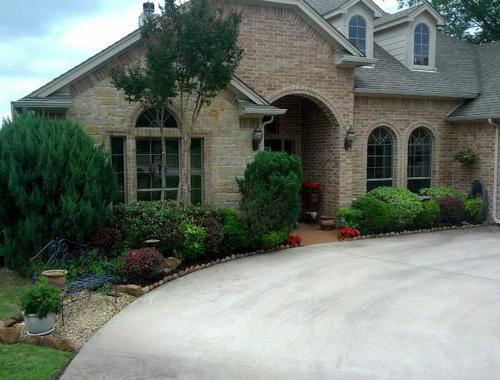
The plant blooms very beautifully: female buds have rounded light green bumps, and male buds look like earrings with several stamens. Juniper is a forest inhabitant of the northern territories, but nowadays it is grown everywhere. Very often, bushes decorate country houses, summer cottages, as well as urban areas.
Views
The most famous today are the following varieties.
- Common juniper. The plant has a cone-like crown, the maximum height reaches 3 m. It perfectly tolerates winter frosts and is unpretentious in care. The leaves are small and thorny formations 1.5–2 cm in size. It is recommended to collect cones closer to October. Juniper pruning occurs in early spring, before active flowering begins.
- Virginia. One of the huge tree-like species, which reaches up to 20 m. The plant grows quickly enough and is resistant to pests and diseases. The needles are dark green in color and needle-shaped or scaly in shape. It is used for the production of essential oil.
- Horizontal. It is also called prostrate, as it grows up to 4 m wide. The height rarely reaches half a meter, because it is a creeping plant. Withstands dry air hard and develops very slowly. Pruning horizontal junipers should be done carefully so as not to damage the main branches.
- Chinese. It is a tree-like shrub that grows up to 20 m. Moreover, its growth is very slow. At the age of 10 years, it is only 1.5 m. It is frost-resistant and difficult to tolerate dry air.
- Cossack. One of the representatives of the genus, which is poisonous, therefore, the use of its cones is prohibited. The shrub grows up to half a meter and creates a 2-meter crown. If the juniper pruning is not done on time, the bush will form dense thickets. This plant is often used to strengthen the soil.
Plantings bring not only aesthetic pleasure, but also noticeable benefits, as they purify the air with a coniferous aroma.
The best varieties for landscape design
Superiority among gardening art, incl. for curly haircuts of conifers, Europe possesses. In general, for decorative decoration of the site, it is best to prefer shade-tolerant plant species with limited growth. The first characteristic helps to keep the crown in a uniform state. The limited and slow growth allows the number of circumcisions required to be reduced to a minimum.
Popular conifers that lend themselves well to formation are:
- Thuja western;
- Cross-pair microbiota;
- Norway spruce;
- Juniper Chinese, Virginia, ordinary;
- Yew pointed;
- Lawson's cypress.
Summing up, it should be recalled that spring and autumn are considered the best time for pruning juniper shoots, it is possible to carry out the procedure in summer. At the same time, in central Russia, it is not recommended to prune in the second half of summer, since in this case the shrubs will not be able to fully prepare for the arrival of cold weather in time and in full. Cutting in autumn is recommended for the purpose of sanitizing the plant to remove dry, diseased and damaged branches.
Soil preparation
Before planting noble needles, it is necessary to choose an illuminated and open place. If the plant is placed in the shade or near a wall, then you can not count on its decorative and refined appearance. The juniper will lose its beauty and grandeur, become sickly and lethargic. The nature of the soil required depends on the variety and species. Most of the representatives are undemanding to the soil, grow well both in calcareous, sandy, and in loams. However, there are varieties that need their own specific conditions. The best solution would be a mixture of coniferous soil, peat and sand in equal proportions. Then it is required to carry out mulching around the trunk using peat with the addition of wood shavings. The pit is pulled out depending on the size of the seedling, and the depth is two shovel bayonets. After completing the procedure, the plant must be watered directly under the root.
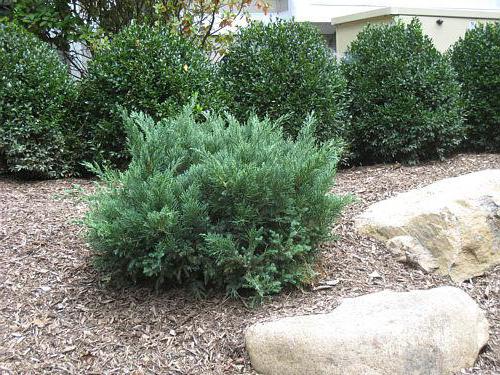

Features of cutting junipers of different types
Some types of juniper have a predisposition to crown formation in one way or another. Therefore, when choosing a variety for planting, it is advisable to know in advance where it will grow and in what form it will be formed. For example, the Chinese Blue Point or Kuriwao Gold can be used to shape the crown by trimming it into a ball, flattened sphere, or pillow. Rock juniper Wichita Blue is suitable for forming a cube-shaped crown, and Hibernica for a cylinder.
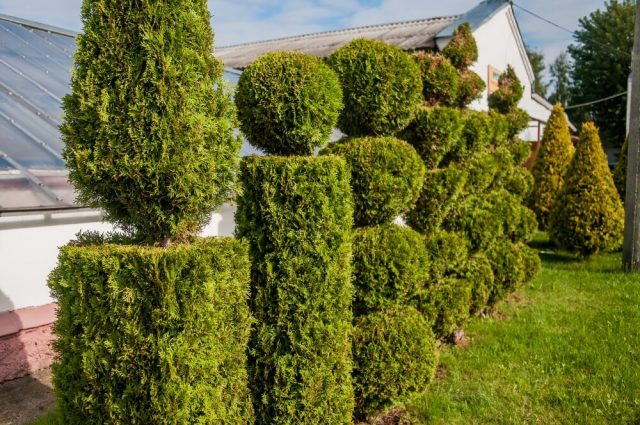

Some landscape designers choose not to prune the juniper, keeping the natural shape of its crown. This applies, first of all, to creeping varieties. However, even such species from time to time need to arrange a sanitary examination and remove damaged and diseased shoots. Columnar juniper varieties also need minimal intervention. They cut, as a rule, only the annual growth that goes beyond the lateral dimensions of the crown.
Landing technology
Due to its decorativeness, juniper is an excellent solution for a young garden. A group of several seedlings is able to immediately fill the voids and create a nice composition.
For planting light-loving varieties, an open and high-quality illuminated area with sandy loam or loamy soil is selected, which is well saturated and moistened.
A living, formed hedge of silver-blue juniper will become a bright accent of landscape design. If the soil is sufficiently clayey and heavy, a mixture of peat, garden and coniferous soil, as well as sand is added to it. Before planting, a pit is necessarily drained, broken brick or stone is poured into it.
Plants of all varieties are planted very quickly so that the root system does not have time to dry out, but carefully enough so as not to damage the young shoots and the earthy clod. Then it is watered abundantly and hides from the direct rays of the sun. The density of placement depends on the landscape composition - whether it will be a hedge, group or specimen planting. After the plant takes root in the first spring, the juniper is pruned.It must be done carefully so as not to damage the leading branches, as in the future this will affect the beauty and growth.
Growing a seedling
At the time of seed collection, time intervals must be observed. It is better to make a stock of not quite ripe at the end of summer than finally ripening in the fall. This will make it more likely to germinate. The prepared planting material must be planted immediately, but it is necessary to prepare for the fact that, due to the hard cover, the seeds will give the first shoots only 2-3 years after sowing. Also, if you do not want to wait so long, you can take home a plant previously dug out in the forest. It is imperative to designate parts of the world on its trunk in order to get as close as possible to its growth in its natural environment. A lump of "native" land should be weighty, with a preserved outer layer of humus.
Fertilizers
If you choose the right varieties that are resistant to domestic climatic conditions, then care for young plants will be minimal. They practically do not get sick and are not damaged by pests. Active care of the juniper is required in the spring: pruning, spraying and feeding. Complex and nitrogen fertilizers are used for it. In no case should cow or bird humus be poured under the plant, as it will burn out and die. And it is also not recommended to loosen the soil around, since the root system belongs to the surface type, because of this, the nutrition of the trunk will deteriorate, and the juniper will simply begin to wither. For him, mulching the soil with the help of coniferous land harvested directly in the forest is sufficient.
The main types and types of pruning
Conifers are very popular in landscape design lately. But junipers have been favorites for a long time. Their amazing properties were known even in Ancient Russia: for example, milk did not sour in juniper dishes. Today, gourmets use juniper fruits as a spice in meat and fish dishes.
These coniferous bushes look great both in the form of a hedge and in alpine slides. If the rest of the coniferous crops are used mainly to add decorativeness to the personal plot, then the junipers also purify and disinfect the air.
Caring for a juniper bush is quite simple and not at all burdensome. It is enough to weed and loosen the soil around the bush in time and maintain the necessary moisture level for the tree to develop well and have healthy needles. In the summer, not only watering under the bush is carried out, but also spraying by the rain method.
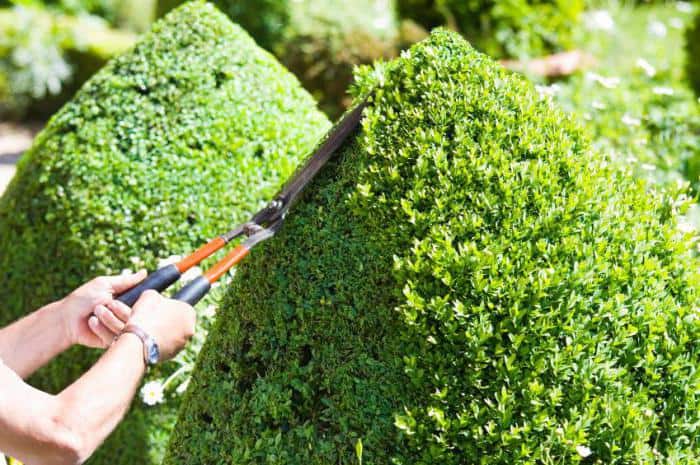

Formative pruning
- Junipers differ from other conifers by their rather rapid growth. Therefore, shoots are cut to preserve the neat and well-groomed appearance of the bush. Bushes with branches sticking out in different directions look very unattractive.
- This type of trimming is also called topiary. The art of making figures from conifers in the style of topiary is gaining more and more popularity, as it allows you to fully manifest your creativity and create a fantastic world in your garden from conifers in the form of sculptures, geometric compositions and animals.
- The trim shape can be geometrically correct and irregular. But, when creating some kind of sculpture, you need to focus on the natural form of the plant. If the variety of juniper is creeping, then a two-meter spiral will not work, and a tree in the form of a cone will not be suitable for creating a ball.
- Juniper can be in the form of a creeping bush, and in the form of a tree. Crowns also have their own classification. The main types are: flat, conical, creeping, pyramidal and spherical. Based on the shape of the bush, an appropriate haircut is also carried out.
- Some experts believe that it is not recommended to carry out formative pruning in the middle lane from the second half of summer. It is not worth cutting the bushes radically in the fall, since they will not have time to get stronger after cutting off the shoots and will winter in a weakened state.
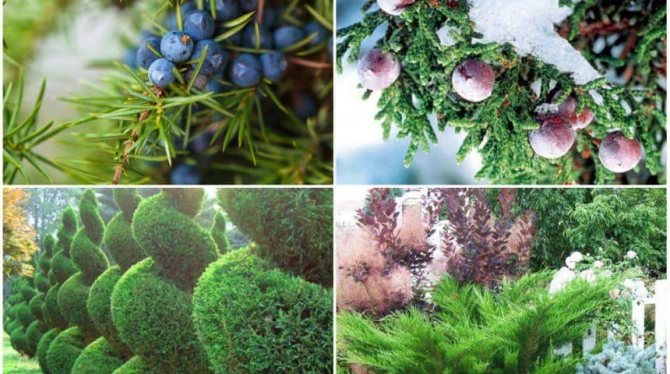

Sanitary pruning
This type is the main one. With the help of this type, all dried, broken, frozen or diseased shoots are eliminated. It must be done regularly in order to timely identify possible diseases in the plant and keep it in a healthy and well-groomed state. In areas with a temperate climate, exclusively sanitary pruning is carried out in the autumn.
Thinning
- This type of pruning is aimed at removing branches that grow towards the trunk and create too much density in the bush and excessive density.
- When you prune in absolutely any way, remember that a juniper haircut is a lot of stress. And although the tree tolerates all the manipulations over it pretty well, for a faster restoration of the bush, the sections are not smeared, but sprayed with special growth stimulants, such as: Emistim, Epin - Extra.
- Some gardeners in the old fashioned way process the cuts with a solution of copper sulfate. Then the top is covered with garden varnish mixed with paint on drying oil. Such measures are needed for faster healing of the plant, and so as not to introduce infection into the tissues of the bush.
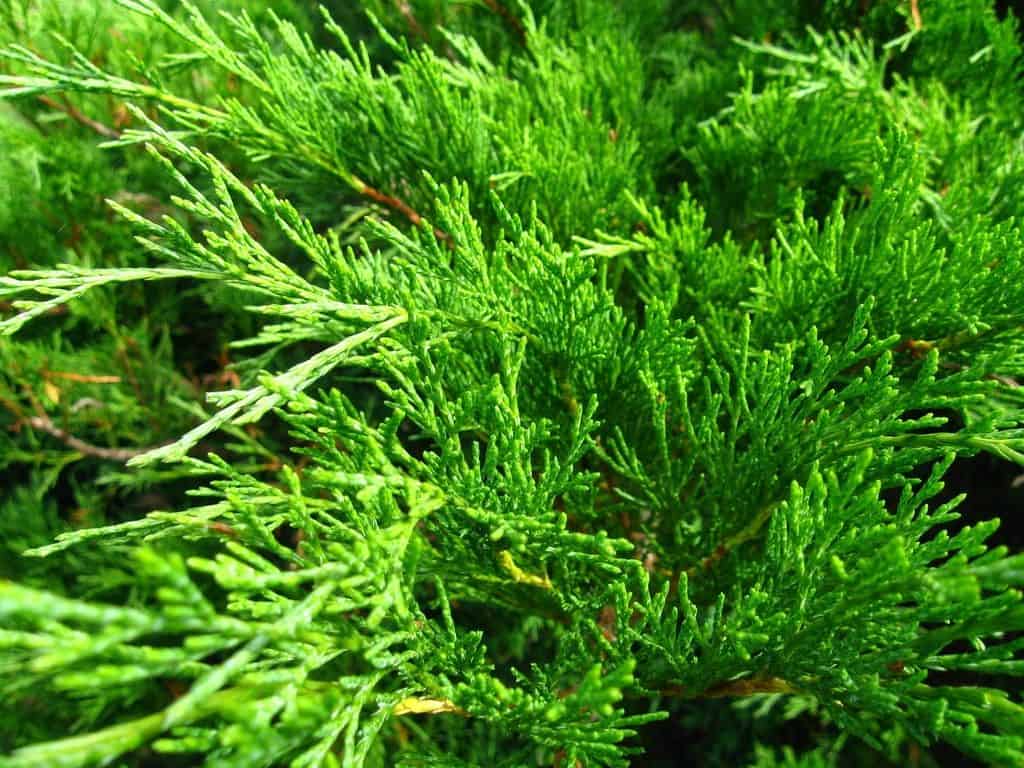

Actions after landing
A huge plus of juniper is the minimum maintenance requirements. The active period begins only at the time of rooting. Once a week, you need to water and spray the branches with water, thanks to which the plant will better strengthen in the ground. In the moments of active sunny days it is recommended to darken it. And also do not forget about clearing weeds from the surrounding area.
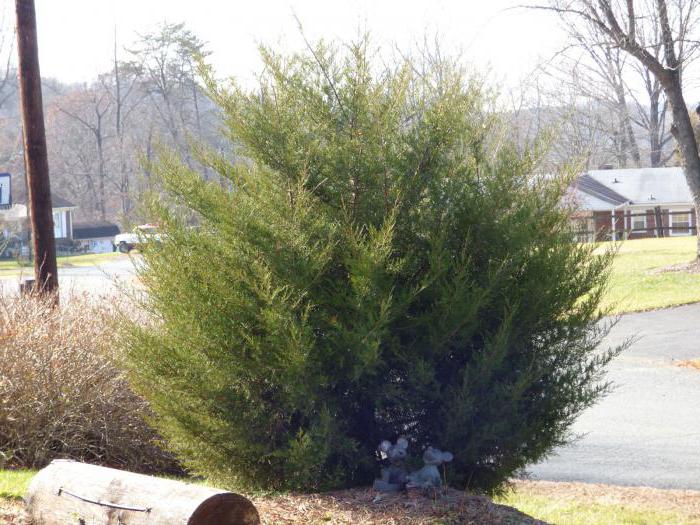

In winter, the young are covered with mulch. After the onset of spring, it is removed so that the trunk does not rot and the juniper does not die. Pruning and maintenance in the future must be done carefully, since during this period the tree will gain its main strength. Watering is carried out only in hot summers, when dry days actively prevail. Then it is enough to pour water under the roots once a month. Spraying the plant constantly will give it a more delicate look. Fertilization is often unnecessary; this is done only with very slow growth.
The trunk circle is expanded annually, it must correspond to the diameter of the crown. It also requires mulching the outer area of the earth to protect the plant from weeds. Because it grows very slowly, frequent pruning of juniper is not required. You just need to sometimes remove dried branches or those that grow inharmoniously.
When to prune a crop
Junipers, like other plants, are best pruned in the fall or when spring comes. In more detail, the best period is from September to October and from April to May. A feature of the plant is the easy tolerance of pruning, which allows such pruning to be carried out without reference to the period. The only exceptions are June and July, when shoots are actively developing at the peak of the juice movement. Also, you should not carry out such procedures in winter.
Read also Photo of violet le cristina
Important! Before cutting the juniper for the first time, the bush must take root and begin to actively develop. This means that the first haircut is carried out no earlier than 2 seasons after disembarking to a permanent place.
For juniper bushes, one pruning is enough, but if necessary, you can increase it up to twice a year. This applies to varieties that belong to fast-growing plants, from which they have already begun to form a figure.With the frame method of growing, plants can not be cut at all if they do not interfere.
Important aspects
Such a coniferous plant, even without a haircut, can give the site a beautiful and rich look. It is necessary only for some of its varieties, the branches of which are scattered chaotically and erratically. Juniper pruning is done when the plant wants to give a unique shape or when creating hedges, then this is done several times a season. Thanks to this, gardeners are trying to restrain growth and make the bushes more compact. Such conditions are typical for creeping varieties such as Sky Rocket or Blue Airrow.
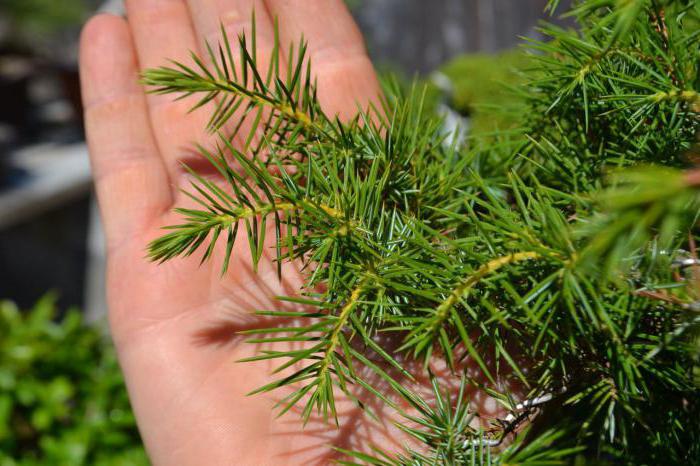

In this process, you must be careful not to damage the young shoots of the juniper. Pruning and shaping are carried out only after a serious examination of the plant for the presence of large branches that are either knocked out of the crown or fall off due to their weight. It is necessary to cut them so that they lean to the side, but at the same time do not leave the plant bald. Some varieties, such as the blue chip, cannot get a beautiful shape, and they only need this procedure to remove old and dried branches that look sick.
Is it possible to cut juniper
Novice gardeners who decide to plant a coniferous perennial on the site are interested in the possibility of cutting shrubs. And most importantly, whether it will harm the plants. Experience shows that juniper plantings need pruning, but they must be carried out at a certain time. Perennial shrub looks decorative after shearing, because it can be given any shape. After removing excess branches, air ventilation improves, and, consequently, the risk of developing fungal diseases is reduced.
Attention! It turns out that the juniper is not only possible, but also must be cut.
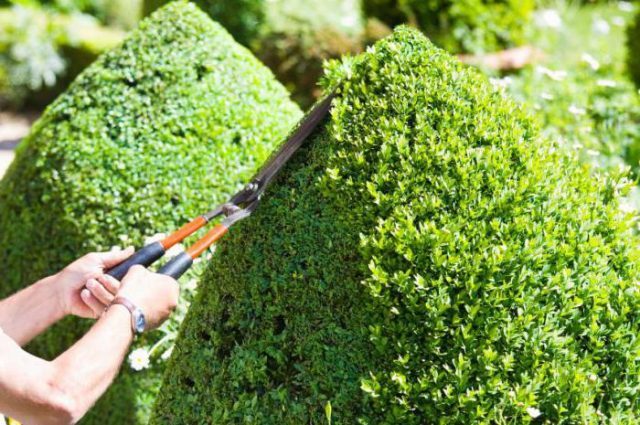

When creating topiary, it is necessary to take into account the peculiarities of the variety and the structure of the skeletal branches of the juniper
Pruning
Clipping rules are universal for many conifers. To do this, you need to pick up those plants that have already turned a year after planting in open ground. It is better not to touch specimens that do not feel well during the adaptation period. The varieties native to the local fauna are ideal for trimming, as they are acclimatized and tolerate artificial changes in their shape well.
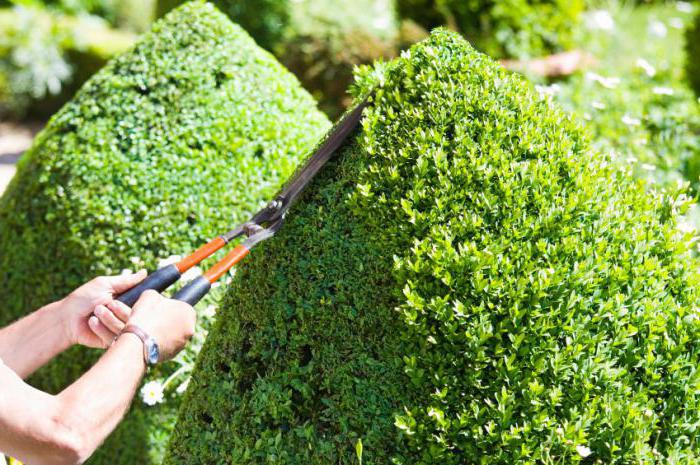

To decorate the territory, it is not always necessary to choose unusual figures; it is recommended to adhere to the natural crown and only emphasize it by removing unnecessary branches.
Spring pruning of junipers is always stressful for the plant, which can harm it. Therefore, it is necessary to remove only 1/3 of the total green mass. You can not leave bare branches, since the plant has dormant buds, and the twigs in the future will not be able to become covered with needles again, but will simply wither.
Tools and means of protection
Conifers have interesting and unique properties, one of which is toxicity. Juniper is just that plant, the essential oil of which can negatively affect the human body. If you have to cut the "Cossack" variety, then you must use gloves so as not to harm the skin. It is required to remember that the resin is not washed off from it, which means that a protective suit or change of clothing is simply necessary. Juniper pruning in spring is done with well-sharpened pruning shears. In the process, it is required to regularly wipe it from the resin in order for it to work correctly.
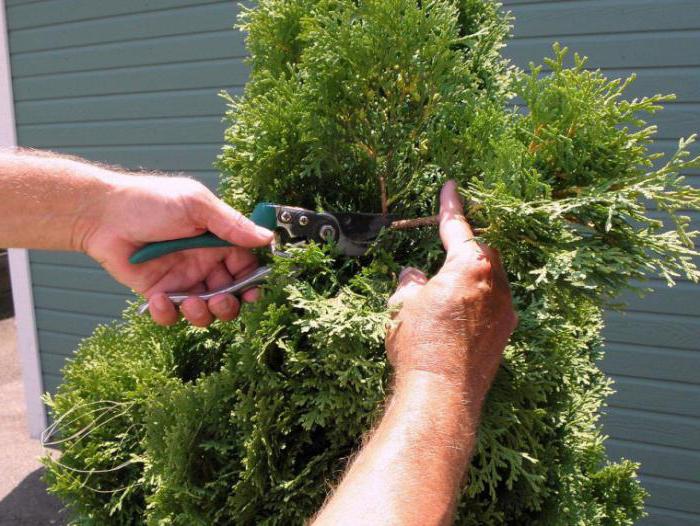

Formation of the crown of the Cossack juniper
When creating a specific shape, you should use a template that will allow you to get a pyramid, ball or perfect circle. Also, a beautiful spiral and arch emerge from the bush.
The hardest thing is to give the appearance of an animal or people, but it looks the most impressive. First, give the basic shape:
- ball;
- triangle;
- square.
It is from them that the figures are formed, gradually cutting off the Cossack juniper and giving the outline.The haircut is carried out along a guide line of a pre-made template structure.
Formation is carried out in autumn and spring. The growth of the shrub is instantly restored and the needles become lush. With the measures taken in the fall, the Cossack juniper remains bare until spring.
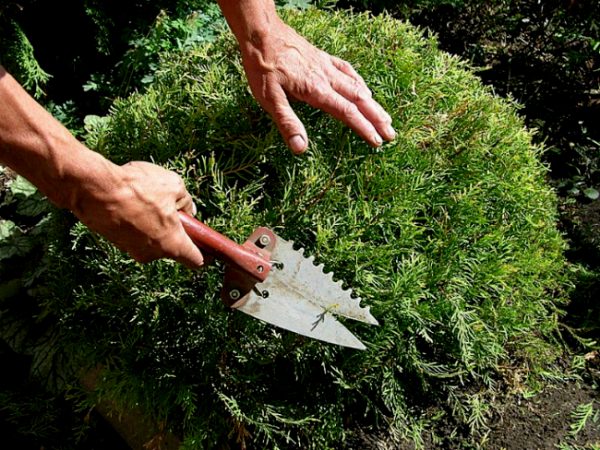

In order not to cut off the excess, the pruning is carried out slowly
Advice
- Correct haircut practically does not change the appearance of the plant.
- The main tools are sharp scissors, pruning shears, saw and knife.
- Even before the moment of shaping, it is necessary to decide what will be the final goal - rejuvenation, thinning or landscape figures.
- The timing of pruning juniper is quite limited, these procedures are performed only in the spring.
- A haircut is required only a couple of millimeters above the eyelet. Moreover, it must necessarily be a kidney growing outward.
- It is better to make the cut not very deep, so as not to touch the supporting branches, but at the same time, there should be no protruding "stumps".
- To ensure good growth, it is imperative to remove:
- wild shoots that grow directly from the roots and have a completely different leaf shape;
- dying, diseased and damaged branches and twigs;
- large fork-shaped crowns when they grow next to each other, as one day they may break.
How to prune-shaping juniper, depending on the purpose
There are several types of pruning. Each of them has a specific goal, and depending on this, our actions will differ. Formation is as follows:
Point method
Part of the shoot is allocated and its fixation is carried out in such a way that it will grow on a pre-selected bud. This method is usually chosen for young and small juniper bushes. This will help shape the skeleton of the bush.
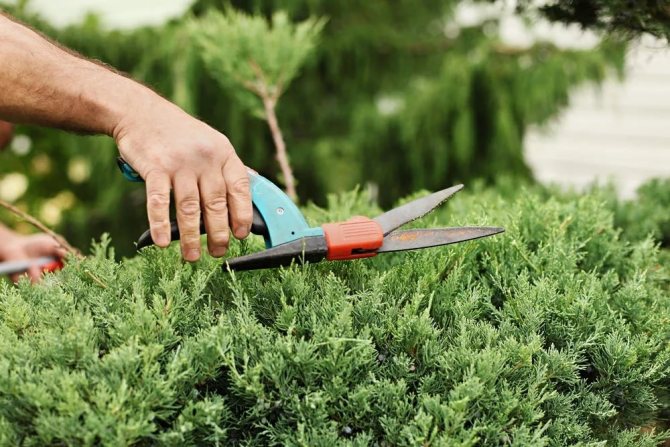

Blind way
Large garden shears are used for cutting. The method is suitable for junipers, in which a crown was formed at midnight, but it is necessary to adhere to certain dimensions of the plant. The blind method will also allow you to prune so that the bush is in the shape of a geometric shape.
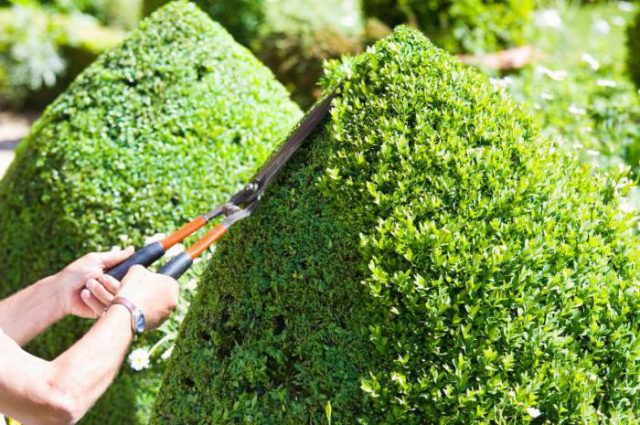

Sanitary pruning
The purpose of sanitary pruning is to improve the health of the bush. But it is also needed to avoid diseases, especially when the plant is young. It is done twice a year. The first is in the spring, as soon as the snow has melted. Frozen and damaged branches are cut off. It is very simple to identify a shrub for the presence of damaged shoots - we will hear the characteristic smell of needles. You may also notice a small amount of resin.
Re-shaping is carried out in the fall. Here you need to pay attention to sick and crooked branches. Sometimes sanitary pruning needs to be done unplanned, that is, after injury or illness.
The creeping juniper has a very branched crown, it grows very quickly. For him, a pinpoint juniper haircut is suitable. Each shoot is shortened separately. This helps to form the bush correctly. Shoots are cut by a third.
Cossack is also growing rapidly. Anything that looks superfluous is cut off. She tolerates a haircut well, but you need to start it from the age of two. Slices are made lengthwise, since the transverse ones worsen the appearance.
Thinning shaping
This method of pruning will allow you to get rid of unnecessary density in the crown, the plant frees up space inside the bushes. Thinning pruning is usually done in spring or summer. It is necessary to remove the shoots that grow inward, get rid of small trunks, remove the forks, because of which the bush may break. The purpose of this formation is to improve the flow of air into the interior of the plant and to evaporate moisture that can accumulate in dense areas. This will help prevent mold and mildew from forming on the bush.
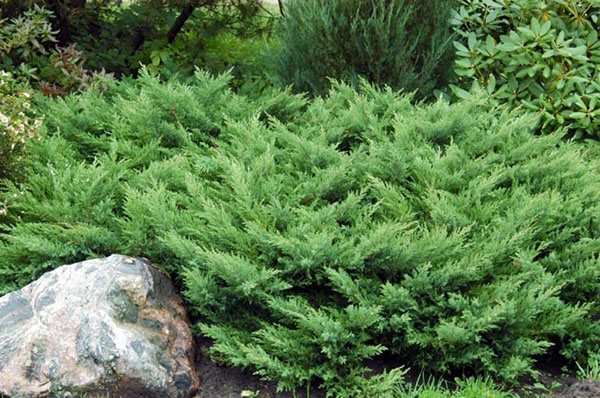

Formative pruning
An ornamental shrub grows very quickly. Because of this, the appearance deteriorates. The purpose of formative pruning is to limit vigorous growth and give the plant a beautiful appearance. The shortening is usually done annually. About 20% of the mass is removed. Shoots that go beyond the already formed crown are also cut off. You can fix using several large branches, and remove all unnecessary shoots.
As soon as we finish cutting, we need to take more careful care of the plant. We spray the bushes with a growth stimulant to avoid stress on the plant. This will allow him to recover sooner, and to start regenerating damaged shoots. Slices that remain after cutting off the branches do not need to be smeared.
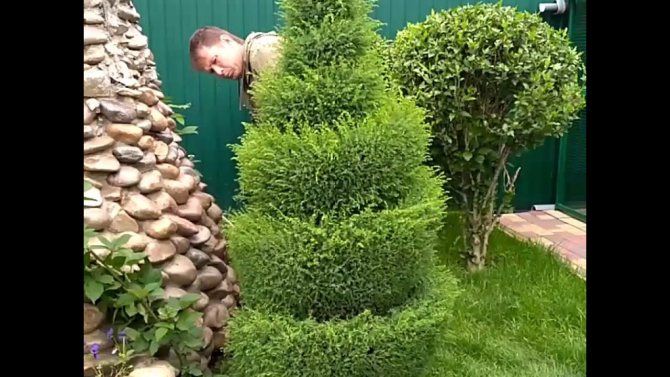

Juniper shaping and shearing

